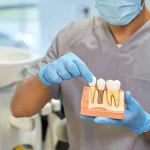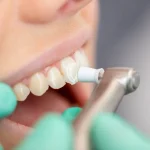Early dental diagnosis can save you from pain and costly treatments. X-rays play a crucial role in this process. Your dentist in Hollywood, FL uses these images to look beneath the surface. They see what the naked eye cannot catch. Tiny issues, like tooth decay or bone loss, become visible. This allows for quick and easy intervention. Early action prevents bigger problems, like root canals or tooth loss. You gain peace of mind and better health. X-rays also help in planning future treatments. They guide the dentist in making precise choices. Your visits lead to better outcomes and more comfort. You might worry about radiation. However, modern X-ray technology is safe. It uses minimal exposure to protect you. You partner with your dentist to maintain lifelong dental health. Rely on X-rays for a thorough and complete check-up. The journey to healthy teeth starts with a simple click.
Why X-Rays Matter in Dentistry
X-rays act as the dentist’s eyes beneath the surface. They reveal hidden problems that can quickly escalate. For instance, early detection of cavities or gum disease makes treatment less invasive. The benefits go beyond just spotting decay. X-rays help in assessing bone health and the position of teeth. This is important for children whose mouths are still developing. It ensures that their permanent teeth have enough space to grow.
Types of Dental X-Rays
Different situations require different types of X-rays. Here are a few common ones:
- Bitewing X-rays: Show details of the upper and lower teeth in one area. They help detect decay between teeth.
- Periapical X-rays: Focus on one or two teeth from root to crown. Useful for spotting problems below the gum line.
- Panoramic X-rays: Capture the entire mouth. They help in assessing jaw issues and planning implants.
Each type serves a unique purpose in your dental care plan. Your dentist will choose the best one for your needs.
Safety and Frequency of X-Rays
Concern about radiation exposure from X-rays is common. However, dental X-rays use very low doses. Modern equipment and techniques further minimize this exposure. The American Dental Association and other health agencies assure the safety of dental X-rays.
Frequency of X-rays depends on your oral health. For example, children may need them more often to monitor development. Adults with ongoing issues may also require frequent X-rays. Your dentist will recommend a schedule based on your situation.
Comparing Traditional and Digital X-Rays
Technology has improved how we take and analyze X-rays. The shift from traditional film to digital offers many advantages. Here’s a quick comparison:
| Feature | Traditional X-Rays | Digital X-Rays |
| Image Quality | Good | Better clarity |
| Radiation Exposure | Higher | Lower |
| Processing Time | Slower | Instant |
| Storage | Physical copies | Digital storage |
Digital X-rays offer speed, clarity, and safety. They allow for easy sharing with specialists if needed.
Understanding Your X-Ray Results
Once your X-rays are taken, your dentist will explain the results. Look for signs of cavities or infections. The images might also show bone loss or other changes. This discussion helps you understand your dental health better. Ask questions if you have concerns. Active participation in your dental care leads to healthier outcomes.
Conclusion
The role of X-rays in early dental diagnosis is invaluable. They offer a clear path to timely and effective treatment. Your dentist uses them to provide you with personalized care. Regular check-ups, armed with X-ray technology, secure your dental health for the future. Trust in their ability to reveal what you cannot see. Dental visits become a smooth and reassuring experience. Stay proactive. Put your dental health first and benefit from a lifetime of confident smiles.







